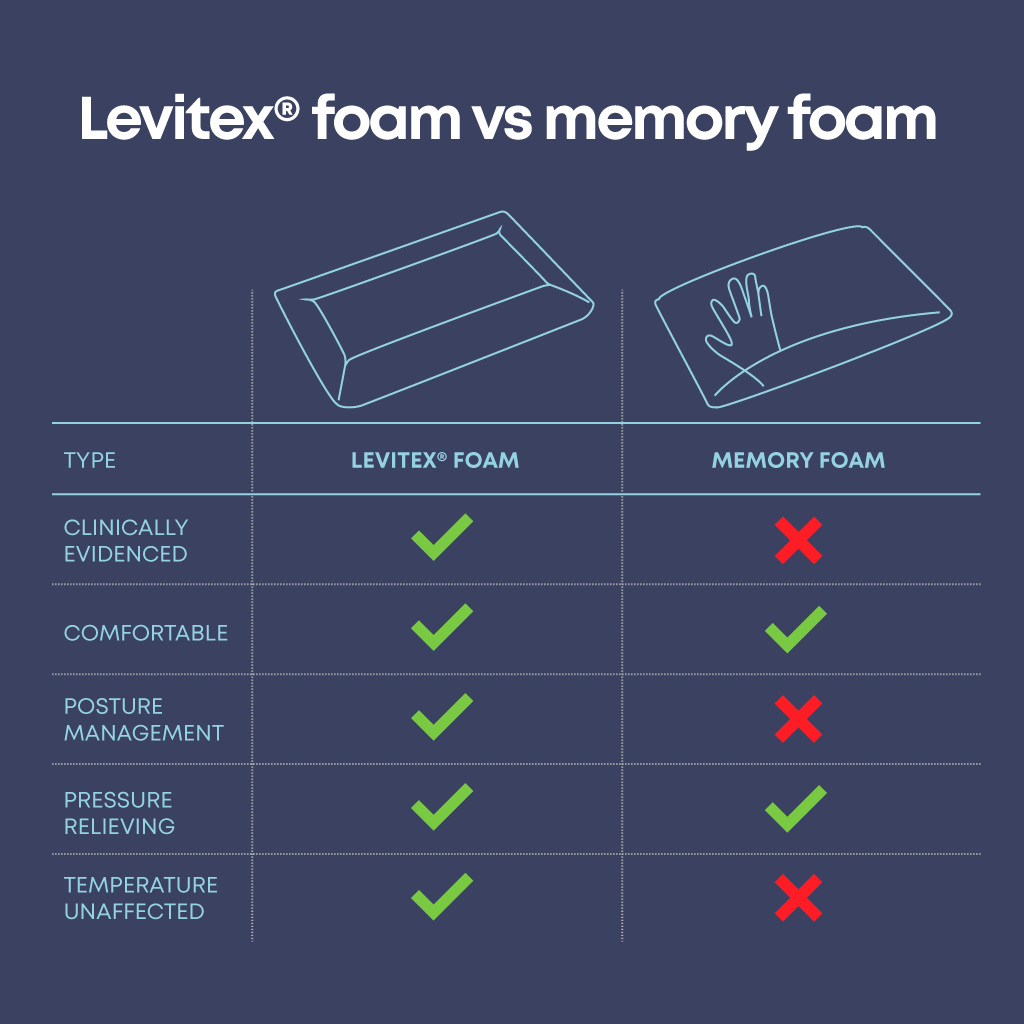The history of memory foam
Memory foam, also known as visco-elastic foam, was invented in the late 1960s. It is the year of 2020, and it remains an incredibly popular surface to sleep on.
If you are thinking it is unlikely humans have not invented a better, healthier sleeping surface (aka mattress) since the 1960s, you are correct. Is memory foam good for you? In short, no.
It is NASA that we actually have to thank for the invention of the foam. In the late 1960s, their pursuit to find a surface that would make it more comfortable for astronauts to leave and enter the Earth’s atmosphere led them to discover the foam. The foam was not meant to be used for sleeping surfaces on Earth, but the comfort it provided meant that it quickly spread beyond space bases.
How did memory foam become so popular?
The reason that memory foam has become so incredibly popular, is down to two things.
Firstly…
In the 1960s, it was simply the biggest revolution in the world of mattresses since the 1930s. Obviously, being invented by NASA carried quite some weight, too. Incidentally, no other sleeping surface rivalled it until recent times when the Levitex foam came along.
While the 1970s and the 1980s provided us with water beds and air beds, the popularity of both of these was short lived.
Secondly…
The foam is super comfortable. There is absolutely no denying this. It even sounds comfortable – a surface that moulds to your body and essentially allows you to ‘nest’ in your mattress? Theoretically, this is a dream. It is no surprise that many are drawn to this benefit, while disregarding the disadvantages. Nevertheless, the foam is just not at all good for human bodies, as comfort does not always equal what is good for us.
It’s tricky. We’ve been sold on comfort as the sole necessary requirement for our sleeping surface for the past hundred years. In 2021 though, our pillows and mattresses should and can do more for us.
So…
What makes memory foam so bad for us?

Disadvantages of memory foam
- Poor spinal alignment & sleep posture (how your body parts align with each other). Having a good spinal alignment helps you put less pressure on your back, therefore helping your posture. Good sleep posture is impossible to achieve when sleeping on a memory foam mattress, as memory foam moulds to your body. This solidifies bad sleep posture habits. Encouraging improper spinal alignment is the main reason that we would not recommend memory foam as a sleeping surface.
- Memory foam is very temperature sensitive. It takes on the temperature of the environment it is in, therefore causing a hot or cold sensation when you get in bed (depending on the season). For example, in the winter, memory foam goes quite cold and hard. It then takes a moment to soften up after you get in bed.
However, the foam also traps the heat that your body gives off at night, making airflow circulation around your body near impossible. This may be fine in the winter, when you are trying to stay warm, but incredibly inconvenient in the summer. - Getting out of bed. As the foam moulds to your body shape and softens, you may find you have woken up in a nook of sorts. This makes getting out of bed hard, as it is difficult to engage your core. You are effectively pushing yourself off a very soft surface. Imagine trying to get out of quicksand – this is a very similar sensation.
- Memory foam is particularly bad at a lower density, which is generally what the ‘bed in the box’ mattresses are composed of. Therefore, you get much less product per square meter for your money. The lower the density of the foam, the more air you are buying, instead of actual foam.
- Potential fire hazard. Similarly, to the last point, this is a density issue. The less dense the foam is, the more air it includes, therefore the stronger reaction with oxygen is there for the fire.
Advantages of memory foam
Of course, there are advantages of the foam too. Otherwise, it would not have become so popular all over the world. How have memory foam mattresses and pillows become so widespread?
- Memory foam is very comfortable. As it compresses under pressure, it creates a feeling of your body being hugged and moulded to.
- Reduced disturbance due to movement. Simply put, if your partner turns and tosses at night, the foam mattress will reduce the impact of this on your sleep. The foam essentially creates a personal sleep zone for each of you, minimising the impact of the other person’s movements.
- Improved pressure distribution. As the foam moulds to your body, it helps distribute the pressure. This allows those of your body parts with the most pressure on them during the day to rest at night.
Memory foam VS Levitex foam
It is up to you to make up your own mind after getting to know the pros and cons of memory foam. It checks some boxes, sure, incredible comfort being one of them.
What Levitex can do for you though, is provide the same comfort, along with pressure relieving qualities AND add postural management into the mix.

Would you not rather sleep on something that checks all the boxes?
Levitex foam is the biggest innovation in the world of sleep surfaces since memory foam. After 60 years of the reign of the outdated material, it is time to upgrade your sleep.
Not to mention…
Much unlike memory foam, Levitex foam has been clinically evidenced. Our optimum sleeping surface has been researched by scientists at University of Salford and University of Central Lancashire. Their research concludes:
The Levitex topper was identified as being rated statistically more comfortable than the memory foam topper when used over the hospital mattress. The Levitex mattress was scored significantly higher for comfort, when compared to the memory foam mattress.
Are you ready to upgrade your sleeping surface?


